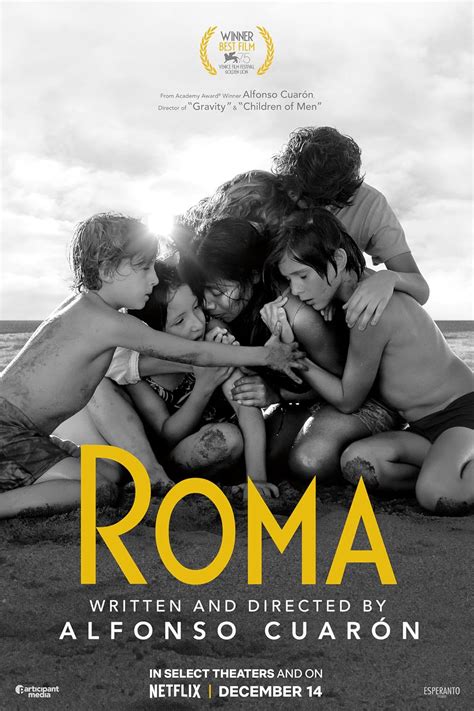Roma

Description:
Roma is a semi-autobiographical film directed by Alfonso Cuarón, set in Mexico City during the early 1970s. It follows the life of Cleo, a young domestic worker for a middle-class family, as she navigates personal and societal challenges. The film beautifully captures the complexities of class and culture, featuring stunning black-and-white cinematography and a deeply personal narrative that reflects Cuarón's own childhood experiences.Keywords:
Family, Memory, Social Class, Cinematography, Resilience, AusterityWhy is the Roma movie so good?
"Roma," directed by Alfonso Cuarón, is highly acclaimed for its stunning cinematography, emotional depth, and authentic storytelling. The film beautifully captures the life of a domestic worker in 1970s Mexico City, blending personal and political themes. Cuarón's meticulous attention to detail and use of black-and-white visuals evoke a sense of nostalgia and intimacy. The powerful performances, especially by Yalitza Aparicio, and the evocative sound design further immerse viewers in the protagonist's experiences. Overall, "Roma" is celebrated for its artistic vision and poignant exploration of family and class.
Is Roma based on a true story?
What is the main message of Roma?
Why was Roma shot in black and white?
"Roma," directed by Alfonso Cuarón, was shot in black and white to evoke a sense of nostalgia and to reflect the film's themes of memory and identity. The monochromatic palette enhances the emotional depth of the story, set in 1970s Mexico City, and allows viewers to focus on the characters and their experiences without the distraction of color. Additionally, black and white cinematography pays homage to classic films and captures the textures and nuances of light and shadow, enriching the visual storytelling.
Explore More Categories:
Found Footage Masculinity Cosmic Hypnosis Netflix Film Environment Sexual Harassment Catastrophe Minimalist Youth Human Experience Submarine Japanese Cinema Civil Rights War Drama Globalization Social Issue Odyssey Small Town Life Psychological Thriller Diversity Choices Humiliation Peculiarities Domestic Tension